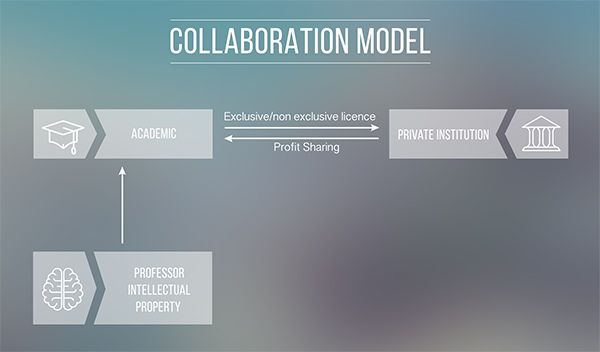By partnering with MazeEngineers, academic-private partnerships allow for Dr. Martinez’s ideas to flourish. His mazes, designs, and behavioral assessments are used by his colleagues when they are readily available through MazeEngineers.
Dr Philip Martinez
Has innovative ideas in behavioral neuroscience
Current Project Progress

Licensing Model
Licensing raises the bar for which products may make it to market. Only a few select innovations may ever reach a customer. In some segments, like consumer healthcare, this works well.

Collaboration Model (Easy access model)
Low risk profiles in a collaborative model allows MazeEngineers to assess the market with a direct to customer model. Profits are then shared. Wide swaths of potential new technologies are tested in the market and can reach customers. In smaller technical markets like Behavioral Neuroscience, this model is ideal.
http://easyaccessip.com/
Frequently Asked Questions
What is the Easy Access IP model?
- Easy Access IP differs from the standard TTO (Technology Transfer Office) model of patenting and licensing for profit as many inventions as possible. Instead, a university still patents the invention, but it gives away the majority—often up to about 95%—of its IP licenses for free, thus bypassing the high costs and lengthy negotiations that often prevent academic discoveries from being commercialized.
- MazeEngineers would then Profit Share the sales of those products/licenses with the originating institution.
Why should my institution participate in Easy Access IP?
- The cost of supporting all the activities involved in licensing inventions is rarely matched by the revenues received.
- A report from the Brookings Institution from 155 TTOs that are members of the Association of University Technology Managers found that less than 13% of universities generate enough revenue from licensing deals to cover their operating costs
- This is because technology transfer offices focus on a few potentially high-value patents and thus pay little attention to the majority of inventions. Almost all behavioral neuroscience inventions fall into the latter category.
- Reference: Fishburn, C.S. SciBX 7(3); doi:10.1038/scibx.2014.77
Is a patent on the device necessary?
- A patent is a sword, not a shield. It gives you the right to attack a competitor who makes commercial use of (“infringes”) your patented technology. Contrary to common belief, it does not give you the right to practice your technology free of interference. In fact, patents are often quite narrow and hence can be easily circumvented: they might apply to a specific design element or combination of characteristics. Furthermore, they have effect only in the jurisdiction of the patent-granting authority.
- In our experience, neuroscience is a worldwide customer base with an international competitive landscape. Thus, multiple patents would be required, significantly increasing costs. A patent in the United States would not give any advantage to selling to customers abroad. If you do not have a patent, or are a TTO seeking to patent, this agreement will still work without one.
How does MazeEngineers generate revenue without patent protection, and why does our institution benefit?
- Using rapid development cycles, lowering the cost of a device, and innovative marketing and sales techniques, MazeEngineers delivers a product to market that is ultimately a competitively priced product that allows widespread distribution. This allows for rapid proliferation and use of the invention. All revenue is then shared to the originating inventor and institution.
- This means your ideas turn into reality, quickly. Your ideas are your most valuable currency, and they should be spread far and wide. We can help.
If we don’t have a patent, what do we license to MazeEngineers?
- In our experience, the best partnerships are “Endorsements.” Like athletes, your professors are the most valuable commodities. Behavioral assessments are unique in that the expertise of the original inventor has significant value. For example, the Barnes Maze was named after Carol Barnes.
- What we ask for is the exclusive right to make this device with endorsement by the institution. Thus, revenue can be shared back to the original institution, and this allows our company to invest in marketing, sales, and production of the device.
If the idea is just an idea, what are the next steps?
- Step 1: Get in touch, and we will work to understand the device and its production implementation.
- Step 2: MazeEngineers will provide a device to donate to the institution, which will be tested and validated
- Step 3: Simultaneously, the device will go immediately to market.
- We highly discourage seeking patent protection for behavioral neuroscience apparatuses. In our experience, this does not improve the profitability of the device. In fact, it increases the cost and thus decreases utilization. These devices are not consumer oriented devices, this raises the cost of the device for a limited user base. Costs cannot be diffused into the larger consumer market.
